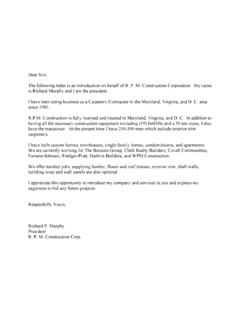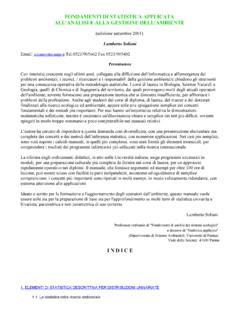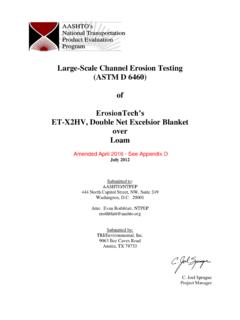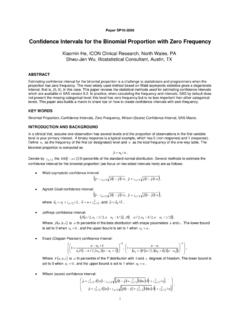Transcription of Simplified Criteria for the Diagnosis of …
1 autoimmune , CHOLESTATIC AND BILIARY DISEASES implified Criteria for the Diagnosis ofAutoimmune HepatitisElke M. Hennes,1 Mikio Zeniya,2 Albert. J. Czaja,3 Albert Par es,4 George N. Dalekos,5 Edward L. Krawitt,6 Paulo L. Bittencourt,7 Gilda Porta,8 Kirsten M. Boberg,9 Harald Hofer,10 Francesco B. Bianchi,11 Minoru Shibata,12 Christoph Schramm,1 Barbara Eisenmann de Torres,13 Peter R. Galle,13 Ian McFarlane,14 Hans-Peter Dienes,15 Ansgar W. Lohse,1and the International autoimmune hepatitis GroupDiagnosis of autoimmune hepatitis (AIH) may be challenging. However, early Diagnosis isimportant because immunosuppression is life-saving. Diagnostic Criteria of the InternationalAutoimmune hepatitis Group (IAIHG) were complex and purely meant for scientific study of the IAIHG aims to define simplified diagnostic Criteria for routine clinical Criteria included sex, age, autoantibodies, immunoglobulins, absence of viral hepati-tis, and histology.
2 The training set included 250 AIH patients and 193 controls from 11 centersworldwide. Scores were built from variables showing predictive ability in univariate value of each score was assessed by the area under the receiver operating characteristic(ROC) curve. The best score was validated using data of an additional 109 AIH patients and 284controls. This score included autoantibodies, immunoglobulin G, histology, and exclusion ofviral hepatitis . The area under the curve for prediction of AIH was in the training set in the validation set. Based on the ROC curves, two cutoff points were chosen. The score wasfound to have 88% sensitivity and 97% specificity (cutoff>6) and 81% sensitivity and 99%specificity (cutoff>7) in the validation :A reliable Diagnosis of AIH can be madeusing a very simple diagnostic score.
3 We propose the Diagnosis of probable AIH at a cutoff pointgreater than 6 points and definite AIH 7 points or higher.(HEPATOLOGY2008;48:169-176.)See Editorial on Page 10 autoimmune hepatitis (AIH) is an inflammatorycondition of the liver that can affect patients of allages, sexes, and Diagnosis needs to beconsidered in any patient with elevated aminotrans-ferases. Timely Diagnosis and immunosuppressive ther-apy contain disease activity in almost all affected patients,and various case series have reported near normal or nor-mal life expectancy in patients diagnosed and treated AIH, however, has a 5-yearmortality above 50%.3,5 Early Diagnosis may be difficultbecause the clinical picture is heterogeneous and there isAbbreviations: AIH, autoimmune hepatitis ; AMA, antimitochondrial antibodies; ANA, antinuclear antibodies; AUC, area under the curve; ELISA, enzyme-linkedimmunosorbent assay; HCV, hepatitis C virus; IAIHG, International autoimmune hepatitis Group; IgG, immunoglobulin G; IgM, immunoglobulin M; LKM,liver-kidney microsomal antibodies; PBC, primary biliary cirrhosis; PSC, primary sclerosing cholangitis; ROC, receiver operating characteristic curve; SLA/LP, solubleliver/liver-pancreas antibodies.
4 SMA, smooth muscle cell the1 Department of Medicine, University Medical Centre Hamburg Eppendorf, Germany;2 Department of Gastroenterology, Jikei University Graduate School ofMedicine, Tokyo, Japan;3 Division of Gastroenterology/Hepatology, Mayo Clinic, Rochester, MN;4 Liver Unit, Digestive Diseases Institute, Hospital Cl nic, Ciberhed,Barcelona, Spain;5 Department of Medicine, Medical School, University of Thessaly, Larissa, Greece;6 University of Vermont College of Medicine, Burlington, VT;7 Portuguese Hospital Salvador, University of Sa o Paulo, Brazil;8 Children s Institute Liver Unit, University of Sao Paulo School of Medicine, Sao Paulo, Brazil;9 MedicalDepartment, Rikshospitalet, Oslo, Norway;10 Department of Internal Medicine IV, Medical University of Vienna, Vienna, Austria;11 Department of Internal Medicine,University of Bologna, Bologna, Italy;12 Kanto Medical Centre NTT EC, Tokyo, Japan;13 First Department of Medicine, Johannes-Gutenberg-University, Mainz,Germany;14 Institute of Liver Studies, King s College Hospital, Denmark Hill, London, United Kingdom; and15 Institute for Pathology, University Medical Centre,Cologne, November 7, 2007.
5 Accepted March 5, in part by grants C03/02 and PI05/1285 from the Instituto de Salud Carlos III, Spain ( ).Address reprint requests to: Ansgar W. Lohse, Department of Medicine, University Medical Centre Hamburg Eppendorf, Martinistra e 52, 20246 Hamburg, : fax: 2008 by the American Association for the Study of Liver online in Wiley InterScience ( ).DOI conflict of interest: Dr. Krawitt is a consultant for Life Cycle material for this article can be found on the HEPATOLOGYWeb site ( ).169no specific test applicable for all particular, inpatients with cholestatic autoimmune liver diseases, atyp-ical features or mixed manifestations in the differentialdiagnosis may be very in olderpatients the Diagnosis may often be unduly delayed andprobably simple and accurate diagnostic scoring system forAIH has not been established.
6 In 1993, the InternationalAutoimmune hepatitis Group (IAIHG) proposed diag-nostic Criteria , which were revised in ,11 Thesecriteria were devised primarily by expert consensus andintroduced to allow comparison of studies from differentcenters. Because these Criteria are complex, insufficientlyvalidated, and include a variety of parameters of question-able value, the IAIHG decided to devise a simplified scor-ing system for wider applicability in routine clinicalpractice based on the data of patients with well-estab-lished and retrospective cohort study included359 patients with AIH and 393 controls (training set andvalidation set). Patient data were collected from 11 inter-national centers in 10 countries from North and SouthAmerica, Europe, and Asia.
7 All centers participating inthe study specialized in liver diseases. Data were assem-bled between January 2005 and September 2006. Thevalidation set was collected after successful analysis of thetraining set, and therefore the frequency of different diag-nosis differed in the two sets. The training set consisted of250 patients [240 AIH, 8 primary biliary cirrhosis (PBC)/AIH overlap, 2 primary sclerosing cholangitis (PSC)/AIHoverlap] and 193 controls [125 PBC, 23 PSC, 6 nonalco-holic steatohepatitis, 4 hepatitis B, 22 hepatitis C (HCV),8 toxic liver disease, 1 acute hepatitis , 2 acute hepatitis C,1 idiopathic bile ductopenia, 1 cryptogenic cirrhosis].
8 The validation set included 109 patients with AIH and284 controls (62 PBC, 22 PSC, 48 nonalcoholic steato- hepatitis , 49 hepatitis B virus, 95 HCV, 2 Wilson s dis-ease, 4 hemochromatosis, 2 toxic liver disease) (Table 1).Diagnoses of controls were assigned according to estab-lished diagnostic Criteria . Diagnoses had to be unequivo-cal for patients to be used as controls. For all AIH patientsthe IAIHG score showed definite AIH before start of im-munosuppressive therapy. As an additional confirmationof the Diagnosis , subsequent response to immunosuppres-sive therapy was mandatory for patients to be included inthis study. For this analysis, only laboratory findings at thetime of Diagnosis were used.
9 Patients or controls with thefollowing conditions were excluded from the study: pres-ence of other causes of liver disease, patients under immu-nosuppressive therapy, or prior liver and Statistical of thestudy was the presence of AIH. Variables included in theanalysis were age, sex, autoantibodies [smooth muscle ac-tin (SMA), anti-nuclear antibody (ANA), antimitochon-drial antibodies (AMA), liver-kidney microsomalantibodies (LKM), soluble liver/liver-pancreas antibodies(SLA/LP)], -globulins, immunoglobulin A, immuno-globulin G (IgG), immunoglobulin M (IgM), absence ofviral hepatitis , and liver histology. Autoantibody titerswere reported on the bases of local laboratory choice of variables was based on expert opinion of portal tract plasma cell infiltration is a char-acteristic feature of AIH,12it is not specific for AIH, andits absence does not preclude Diagnosis .
10 Professor H. (Cologne, Germany) and Professor A. W. Lohse(Hamburg, Germany) therefore defined three categoriesfor grading histology: atypical histology, histology com-patible with AIH, and typical histology. Interface hepati-tis, lymphocytic/lymphoplasmocytic infiltrates in portaltracts and extending into the lobule, emperipolesis (activepenetration by one cell into and through a larger cell), andhepatic rosette formation were regarded as typical for thediagnosis of be considered typical, each of thethree features of typical AIH histology had to be features are a picture of chronic hepatitis withlymphocytic infiltration without all the features consid-ered typical.





